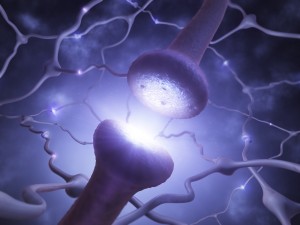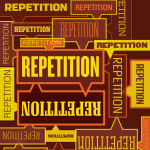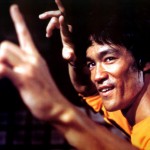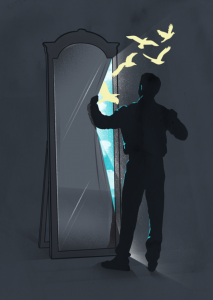 “So what exactly is emotional intelligence?” This is usually the question I face when I mention emotional intelligence (EI or EQ) and, to be honest, I’m always a little surprised that people find the term so foreign. It was because of this, I decided to write this blog post and share some inspiration with all of you and while surprise is usually my reaction, I am also most grateful that EI elicits such a strong degree of curiosity. Why? Well, recent studies have shown that it is the most important factor in defining success in the workplace and happiness at home. More and more companies are starting to hire people based on emotional competencies and this trend is starting to prove highly successful, with well recognised companies (like L’Oreal) focusing on hiring emotionally skilled people.
“So what exactly is emotional intelligence?” This is usually the question I face when I mention emotional intelligence (EI or EQ) and, to be honest, I’m always a little surprised that people find the term so foreign. It was because of this, I decided to write this blog post and share some inspiration with all of you and while surprise is usually my reaction, I am also most grateful that EI elicits such a strong degree of curiosity. Why? Well, recent studies have shown that it is the most important factor in defining success in the workplace and happiness at home. More and more companies are starting to hire people based on emotional competencies and this trend is starting to prove highly successful, with well recognised companies (like L’Oreal) focusing on hiring emotionally skilled people.
And thankfully, unlike IQ, which is inherently difficult to change, you can ‘up-skill your Emotional Intelligence’ with deliberate practice and training. I will explore some themes and exercises with you later in this article.
So back to the opening question – “what exactly is emotional intelligence?” Let’s begin by finding a suitable definition. In its most basic translation, EI refers to the ability to perceive, control and evaluate emotions. Not only one’s own emotions and feelings but, equally importantly, the emotions and feelings of the people around you. The way we interact with and regulate our emotions has repercussions in nearly every aspect of our daily lives.
Carolyn Gregoire wrote in an article for the Huffington Post: “to put it in colloquial terms, emotional intelligence is like ‘street smarts’ as opposed to ‘book smarts’ and it’s what accounts for a great deal of one’s ability to navigate life effectively.” Personally, I couldn’t agree more and to such an extent that Emotional Intelligence is an integral part of my course, The 5 steps to Clarity. In fact, it’s the first step in the program.
 Dr Daniel Goleman, an influential psychologist and behavioural science journalist, who popularised this theory in the late eighties, describes EI as “managing feelings so that they are expressed appropriately and effectively, enabling people to work together smoothly toward their common goals.”
Dr Daniel Goleman, an influential psychologist and behavioural science journalist, who popularised this theory in the late eighties, describes EI as “managing feelings so that they are expressed appropriately and effectively, enabling people to work together smoothly toward their common goals.”
According to Goleman, there are four major skills that make up emotional intelligence. I refer to them as the as the 4 Cores of EQ. I have listed them below with a few exercises and tips to help develop your EI.
Self-Awareness: Recognise the self by becoming more aware of your emotions and how they affect your moods. A great exercise to help with this, is to keep a ‘mood diary’ – you’d be surprised how often we are in a bad mood or are feeling low but have no idea why. Identifying the cause of your mood and writing it down with the corresponding emotion is a great way of becoming more self-aware, with the added benefit of being a good de-stressing exercise.
Self-Management: Next, learn to manage your moods and emotions. It’s all well and good saying I’m angry because Bob (no offense to the Bobs of the world) said something mean, but real emotional intelligence is taking responsibility for one’s own emotional state and learning to deal with it promptly and effectively. Remember, sometimes life events just happen. No reason, no justification, they just happen. But it’s our emotional reaction to these events that set us apart. A good exercise for this Core is to write down a life event followed by your reaction to it and the outcome. Example: A flat tyre in the rain and you are late for work + frustration and anger = rude to taxi driver who over charges you or you are snappy with your work colleagues who complain and you are called in. By writing this down you get to visually see how important your emotional reactions are. And by changing your reaction, you learn to affect the outcome more positively.
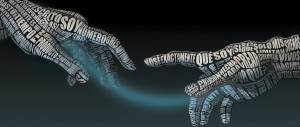 Social Awareness: Recognise how other people are feeling. This is referred to as being empathetic. Stephen Covey, highly successful author (The 7 Habits of Highly Effective People) writes “seek first to understand and then be understood…” and this is especially true when you are learning empathy. The key is to give the person you’re talking to your undivided attention. Listening is the first step, but the real trick is trying to recreate the feeling they are feeling. A good tip in this Core is to read up about body language and facial expressions. You don’t have to be an expert, but understanding people’s postures and expressions go a long way in helping you to understand what others are feeling.
Social Awareness: Recognise how other people are feeling. This is referred to as being empathetic. Stephen Covey, highly successful author (The 7 Habits of Highly Effective People) writes “seek first to understand and then be understood…” and this is especially true when you are learning empathy. The key is to give the person you’re talking to your undivided attention. Listening is the first step, but the real trick is trying to recreate the feeling they are feeling. A good tip in this Core is to read up about body language and facial expressions. You don’t have to be an expert, but understanding people’s postures and expressions go a long way in helping you to understand what others are feeling.
 Relationship Management: Lastly, the human experience is built on relationships. It’s well documented how the lack of affection and adequate socialising has hugely damaging effects on people; it seems we were designed to be around people. By using the points above, you should be in an excellent position to start building effective and, most importantly, appropriate relationships with people. By being genuinely interested in people, that curiosity combined with shared experiences through empathy and story-telling, will help to forge amazing relationships both in the work place and in your personal life. These rich relationships will serve as great foundations for personal happiness and success.
Relationship Management: Lastly, the human experience is built on relationships. It’s well documented how the lack of affection and adequate socialising has hugely damaging effects on people; it seems we were designed to be around people. By using the points above, you should be in an excellent position to start building effective and, most importantly, appropriate relationships with people. By being genuinely interested in people, that curiosity combined with shared experiences through empathy and story-telling, will help to forge amazing relationships both in the work place and in your personal life. These rich relationships will serve as great foundations for personal happiness and success.
To summarise:
- Recognise the self (Self Awareness) – Exercise: Mood Diary
- Manage the self (Self Management) – Exercise: Visualise your emotional reaction to a life event by writing it out
- Recognise others (Social Awareness) – Tip: Read up on body language. Listen to the person. Try to feel what they feel.
- Build appropriate relationships (Relationship Management) – Tip: Be genuinely interested in people, everyone can enrich your life with their story.
Okay, so there you have it. I sincerely hope that this inspires you to go out there and start to improve your EI because I have no doubt that it will improve the quality of your life almost instantly. As usual, if you need some help or know someone who does or if you’d like to ask me a question, please use the Contact Me button on the top right hand side of the screen. I’m always happy to hear from you.
If you enjoyed this article please share on your favourite social media platform. You never know who might see it, or who might need it.



